I was at work one day when a friend/client came in with something in a weathered leather case. At the end of our service he handed me the case with “and this is for you.” This is a particularly gifty friend, he’s previously gifted me everything from a stereo receiver to a pair of socks… and it’s clear that he is dialed into all my favorite things, because today he’s handing me an old film camera.
When I say “old” I’m talking nearly a century. The Kodak Six-16 is an art deco-designed folding camera made in Rochester, NY between 1932 and 1936, and originally sold for $40. It uses a 126mm f 6.3 Kodak Anastigmat lens, inside of which mine has a little bit of haze but not enough to severely interfere with camera function. I have a number of genuinely elderly cameras in my collection, but this is the first one that pre-dates the second World War. I should clarify, I do have a few cameras from this period, like a Brownie Six-20 (1901-35) and a Kodak Vest Pocket Autographic (1912-35), but those are shelf decorations. When I refer to “my collection” I am referring to working, functional cameras. Cameras I load up with film, stuff into my bag and eventually capture bad photographs with.
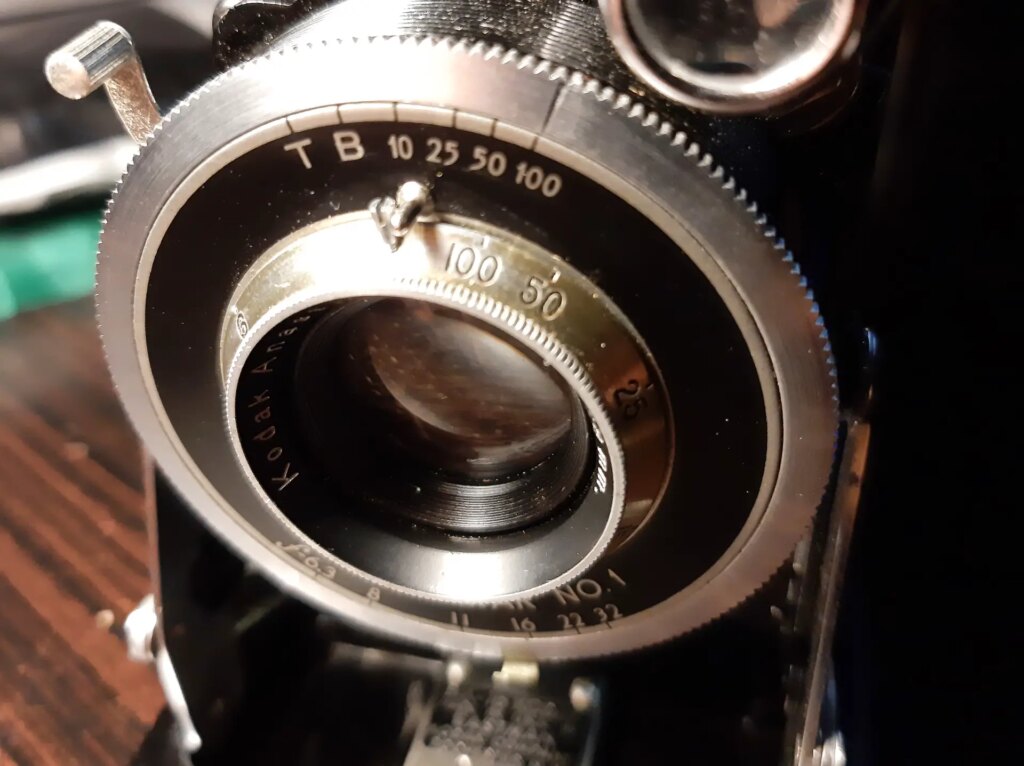
I slowly open the camera (always do it slowly) and notice that everything is in pristine condition. The leather and metal bellows don’t feel dried out and I couldn’t find any pin holes. I tested the mechanics, the camera cocked and fired, the focusing switch works, the aperture and shutter speed selectors worked, and I could even see through the viewfinder a little bit. Slick! The viewfinder was actually much clearer than those in many such older cameras I’ve looked through, no fungus inside, glass was clear and unscratched, it was just small, so I could only kinda see how I was framing the shot, but I was able to see if I had the camera positioned level with the horizon and that’s about as good as I was hoping for. There is also a fold-out metal frame finder you can use to compose the shot with, no lens, just a rectangular metal opening. I never trust these things to be accurate, so I’m just going to point and shoot and hope for the best.
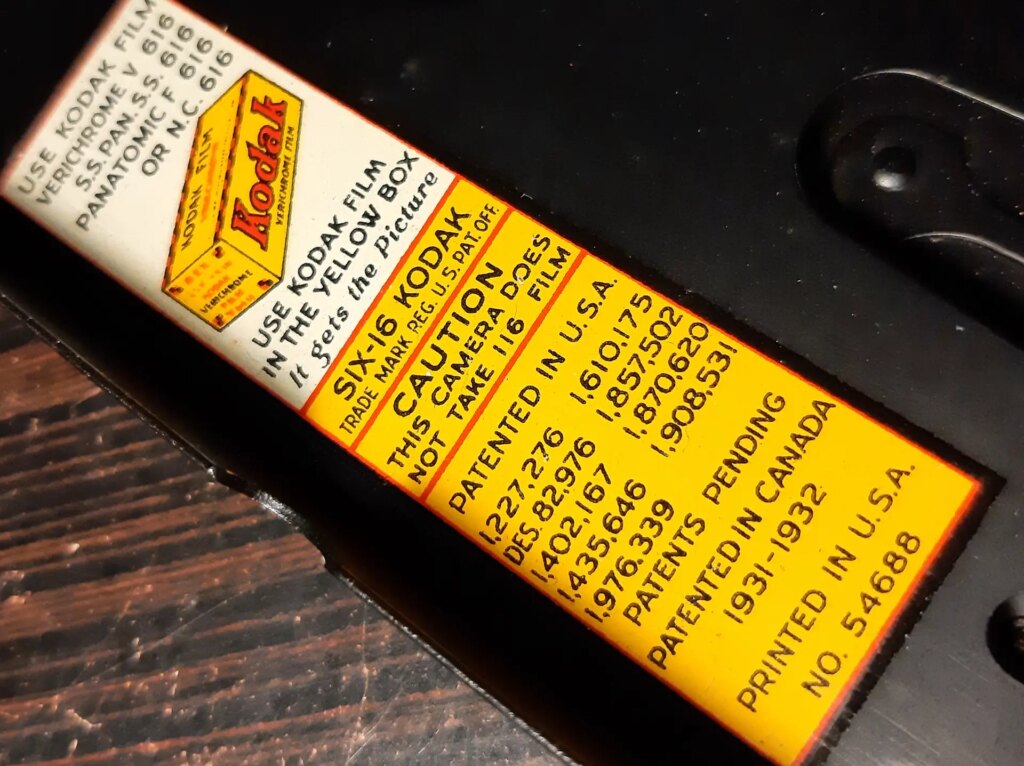
The aperture settings are limited to f/32, 22, 16 and 11, and the shutter speeds are even more limited to 1/25, 1/50 and 1/100 (plus Bulb and Time speeds). Film was much slower back in the 30s, usually with an ASA rating of 25-50, though some faster films existed, so shutter speeds that maxed out at 1/100 of a second were perfectly normal. I tested all settings, they all worked as if brand new. That’s crazy. It’s like someone’s great grandfather bought this camera but then lost it almost immediately while hanging around in his climate-controlled humidity-proofed storage facility. The only thing that shows any wear whatsoever is the leather case. So the camera likely spent most of its life safely tucked into its leather home.
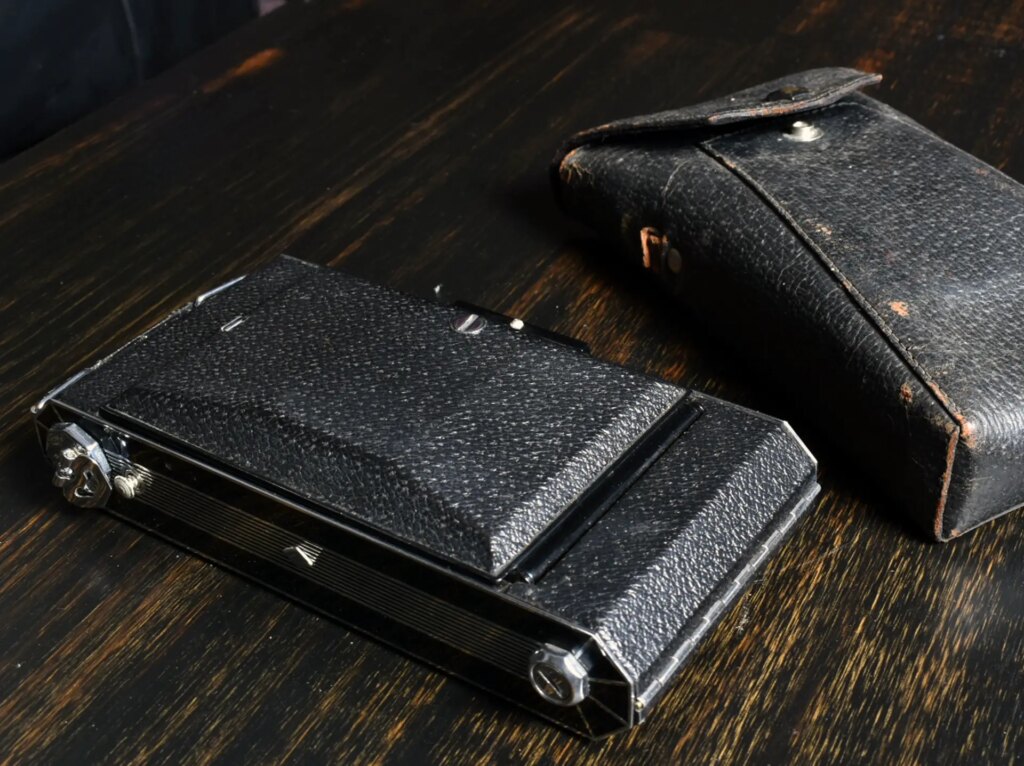
Does this thing still work? Can I load it with film and take pictures with it? This machine was around during the Great Depression, what are the odds I can take it out and shoot some crappy pictures with it? What would I even shoot?
First thing’s first, figure out the film issue. The Kodak Six-16 camera used Kodak 616 film (naturally), that film was discontinued in 1984. So there’s no phoning B&H for a couple rolls of 616 film. However, there is an Italian company, Camerhack, that makes adapters for some obsolete film formats. Using these little plastic shims I’m able to load readily-available 120 film in place of 616. It’s not an exact fit but close enough, and you can shoot five great big panoramic shots per roll of 120 film, more if you rig up some sort of plastic masking inside the camera, but I’m happy with five gigantic photos.
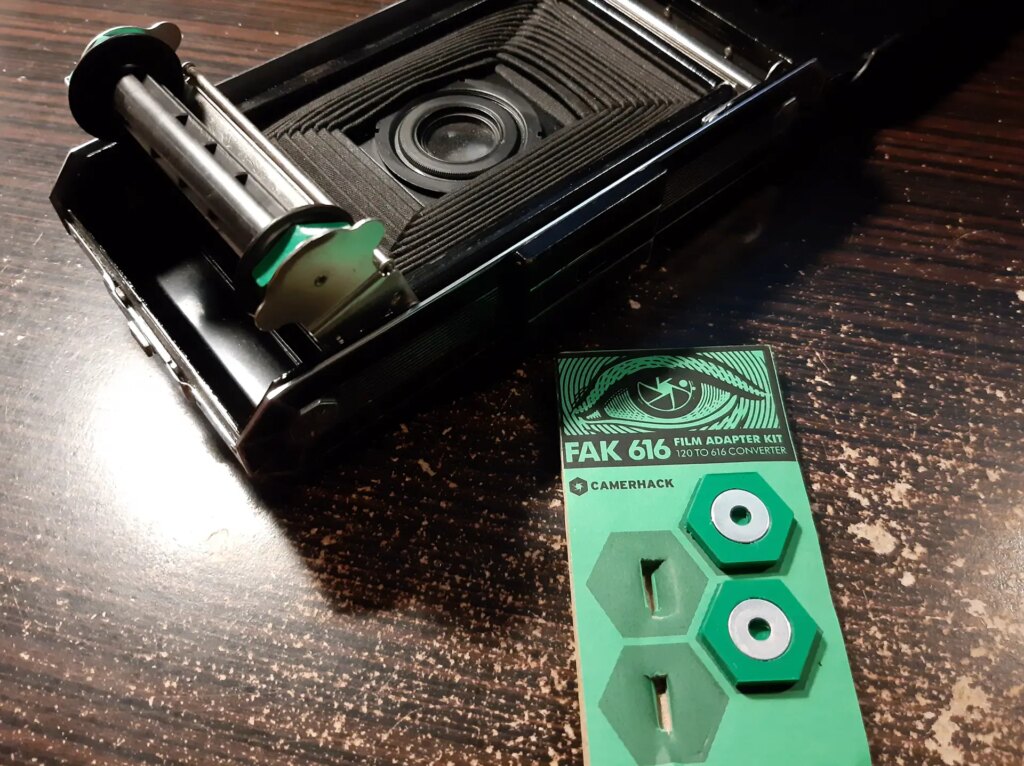
I had two rolls of color film. 400-speed Fuji film and 100-speed Kodak Ektar. Expensive film to be using in this sort of camera, which may or may not even work, but it’s what I had. I loaded the Fuji into the camera, using the plastic adapters to make the film spools fit, and wound it to the first frame. Frame number 3. That was the first frame, because that was the number that showed up through the little red window on the back of the camera. The instructions that came with the adapters gave clear instructions as to how to align frames, and I made note of it onto a bit of vinyl tape I stuck to the camera body, so I’d not forget.
However, I did forget. I wound the film to exposure 3 1/2 rather than 3. Crap, already off to a rocky start. I figured this was a trial run, and there’s no point in sweating the details. Some pics would just be better than others. The winding part of this exercise was tight and I was hoping not to break the winder in the process. The focusing was all guess work. I looked down at the numbers on the focusing ring, numbering from 6 feet to 100+ feet. I’ve never been good at zone focusing from the hip like that. Is my subject 20 feet away? 50? Will the only thing in focus be a tree some 12 feet behind my subject? At one point I even forgot to focus entirely. I am absolutely not winning this day.
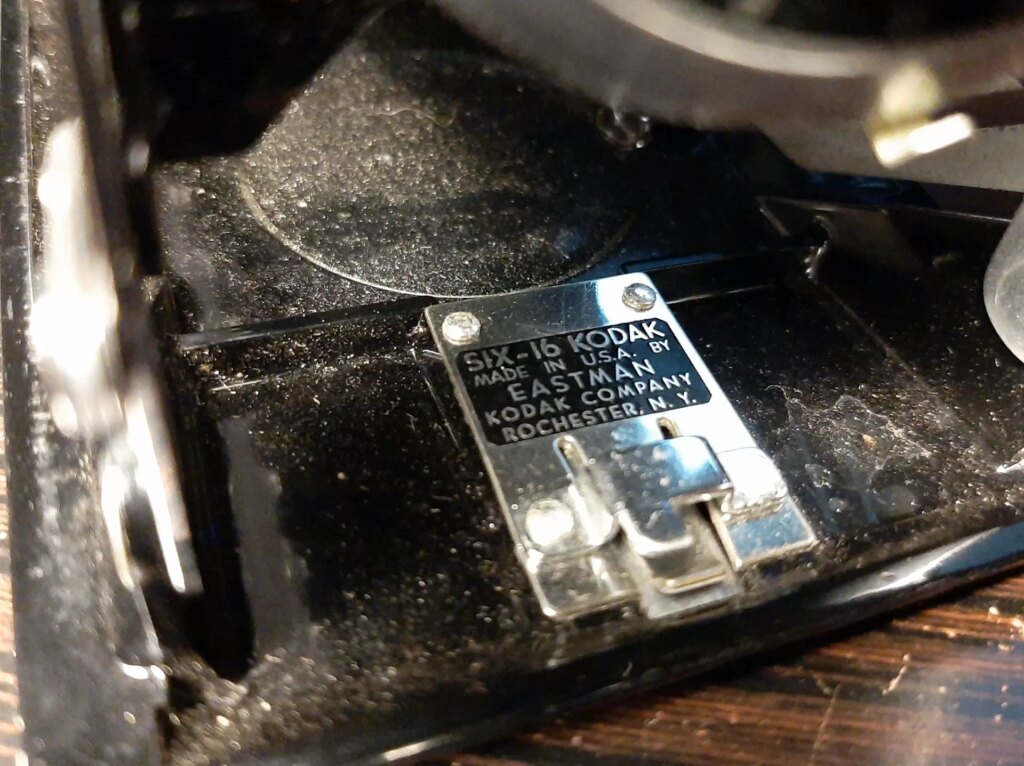
I finished my first five shots and sat down away from direct sun to switch rolls and, as luck would have it, I was unable to lift the rolls up out of the camera. I pulled and prodded, first with my fingers then with my keys, eventually using the side of a pocket knife to lift the hinged spool holding apparatus to where I could remove and replace the film. Total time doing so, 20 agonizing minutes. It seemed like every few minutes using this machine, I was about to do something that was going to break it completely. It survived 90 years without so much as a scratch on it. Think of all the events of human magnitude that had happened during this camera’s lifetime, this piece of Kodak has seen it all… only to be broken to pieces via the clumsy hands of a nerd with a blue mohawk on the streets of Burlington, Vermont.
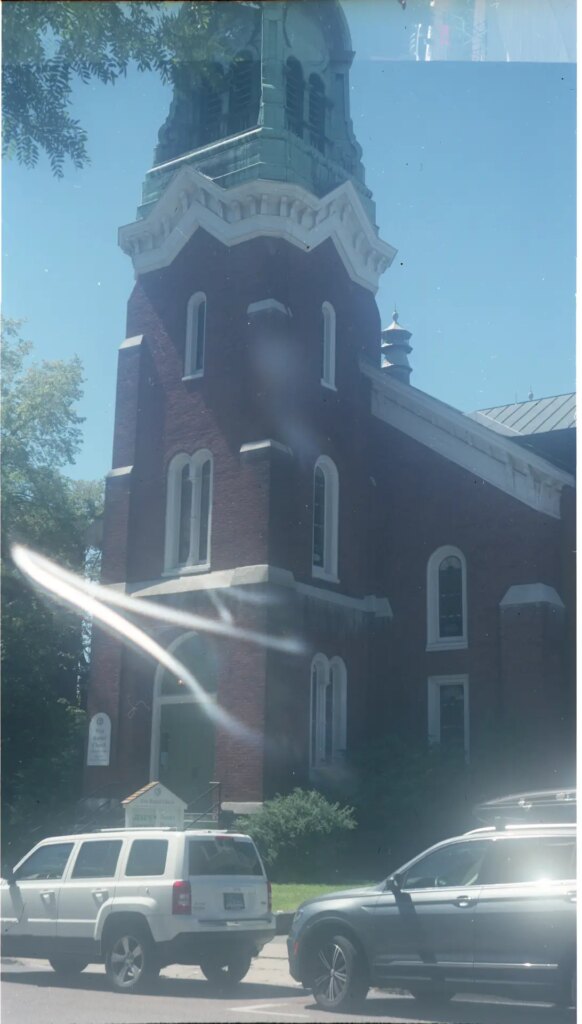
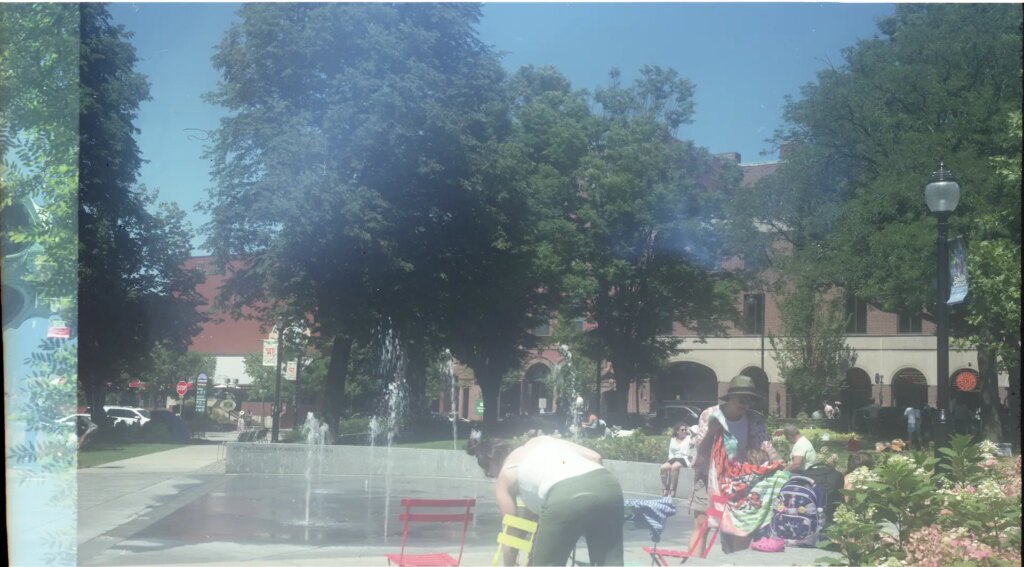
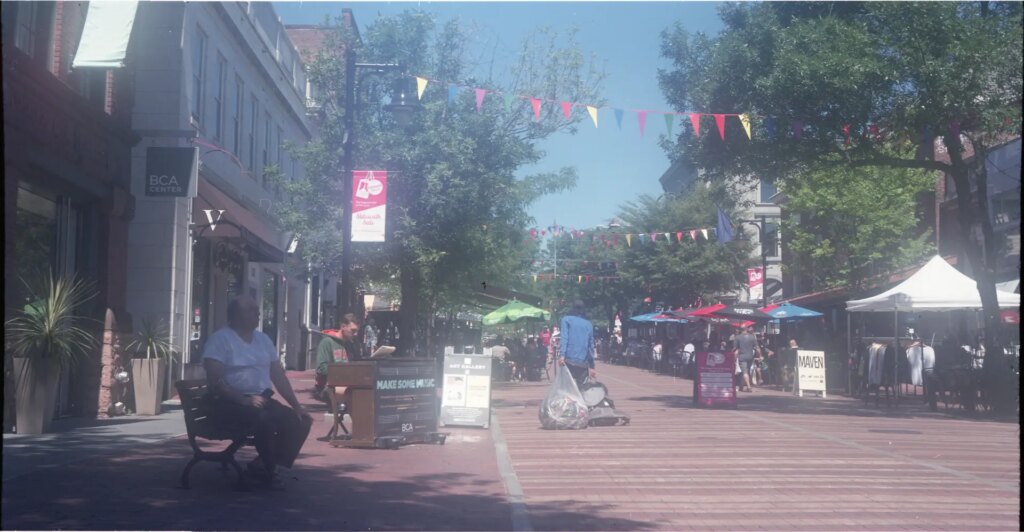
For all the difficulty of the first roll, the second roll was even worse. The numbers on the Kodak Ektar backing paper were so faint I didn’t even notice the number “3” as it passed the red tinted window. I put on my glasses and squinted down into the round red portal, “4” glanced back at me. “You have to be kidding me” I said to the camera. I shot a few pictures, they were very difficult to wind. Then as I finished the second to last photo it stopped. Wouldn’t budge. The winder was stuck. The first photo was misaligned, second one was likely half covered with the contents of the first, the second and third were maybe okay? If even in focus? The fifth, I can’t shoot the fifth.
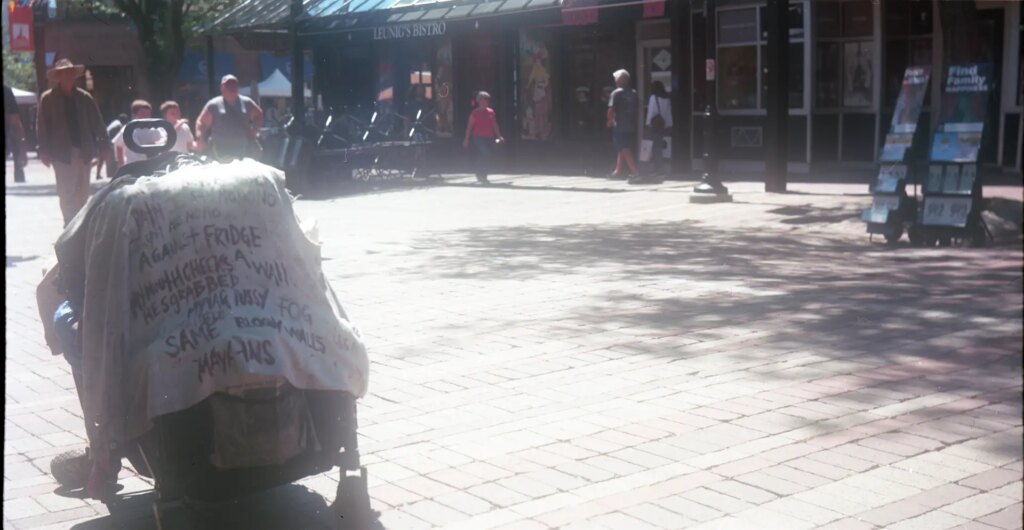
“Forget it. Going home.”
I put the camera back into my bag and head back to my car. I would take it home and open it up in my film changing bag and wind the rest of the film onto the take-up spool. Dismal. I was not happy. I started the day excited to load this thing up with film, walk through downtown shooting photos, the first pair of hands to do so since the days when all men wore fedora hats when leaving the house, and the results would somehow be a magical peer back into time. The reality, however, is that I am shooting ill-fitting modern film with an antique camera. I had to remind myself that the fact this thing was even working at all was a minor miracle. That fact that I didn’t break it? Even MORE of a miracle. It’s best to just develop these two rolls and see what happens. There might not be anything on the rolls at all, of the photos would be completely messed up somehow by fault of the camera. At that point what will it matter if I got four terrible photos or five? There will be some trial and error. I will probably need to sand down some surfaces on the plastic adapters or add a drop of oil somewhere.
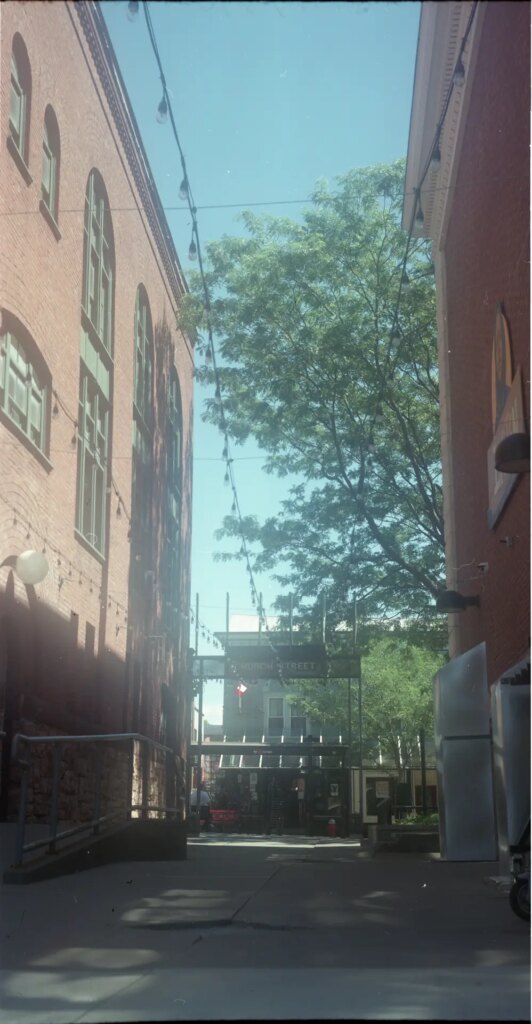
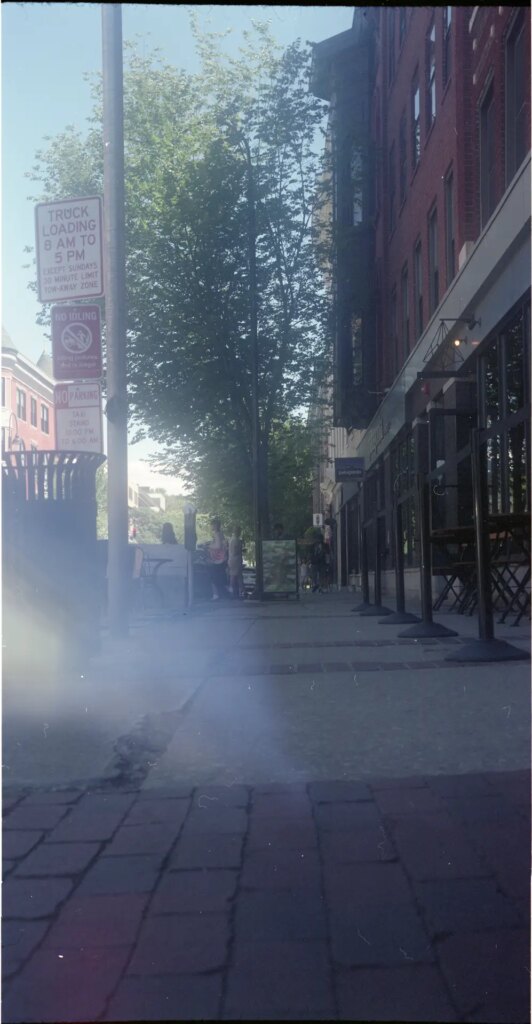
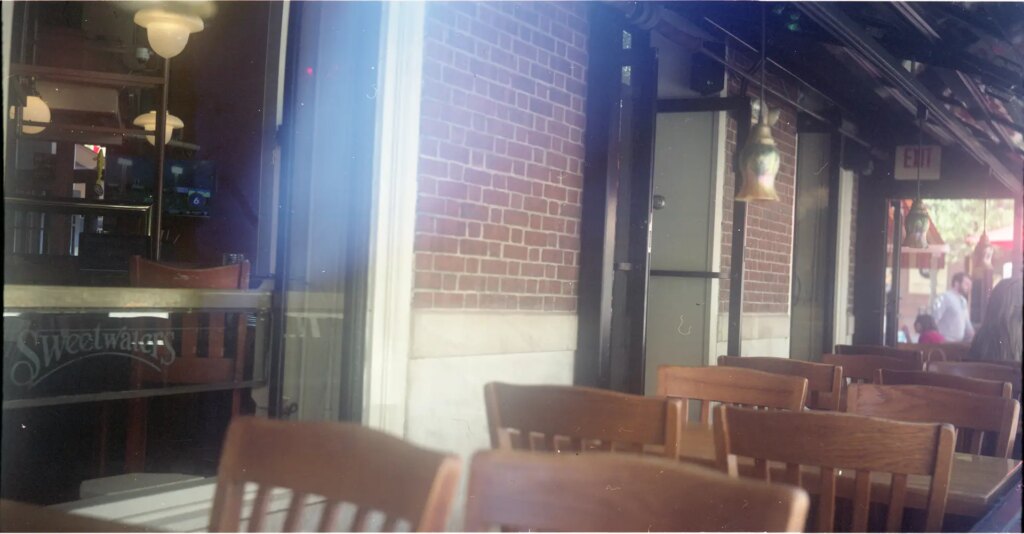
Results were varied. There were no light leaks but the lens was prone to glare. Photos weren’t the clearest but still better than with a Holga. Framing was actually better than I expected, though a few had me wondering “Just what was I looking at?” Film technology has advanced considerably since this camera’s inauguration, yet looking at the photos I did feel a bit transported in time, to what my photos might have looked like had I shot them 90 years ago. Still terrible, of course, but well-aged. My adventure was a success, in that regard, and there will probably be future adventures with this machine.
Will there? Future adventures, I mean? So much of the thrill of this was the mystery of the unknown. Will it work? What will the pictures look like? Will I enjoy it? Will I feel badass shooting this leather and steel dinosaur? Now that I know the answers (“yes,” “meh,” “sometimes” and “of course”) I’m not as drawn to this machine as I was prior to our outing together. Perhaps in time I can get more excited about shooting low-ISO B&W film through it, but in all honesty this will most likely remain a shelf trophy with photo examples to show company when they ask “Think it works?” It’s a “Model T,” looks interesting to drive in a parade and it’s undeniably a piece of important history, but I’m just a bit more partial to driving a muscle car. I leave the door open to future experimentation, this camera survived a couple generations, I think it will be fine if I ignore it another three or four years.
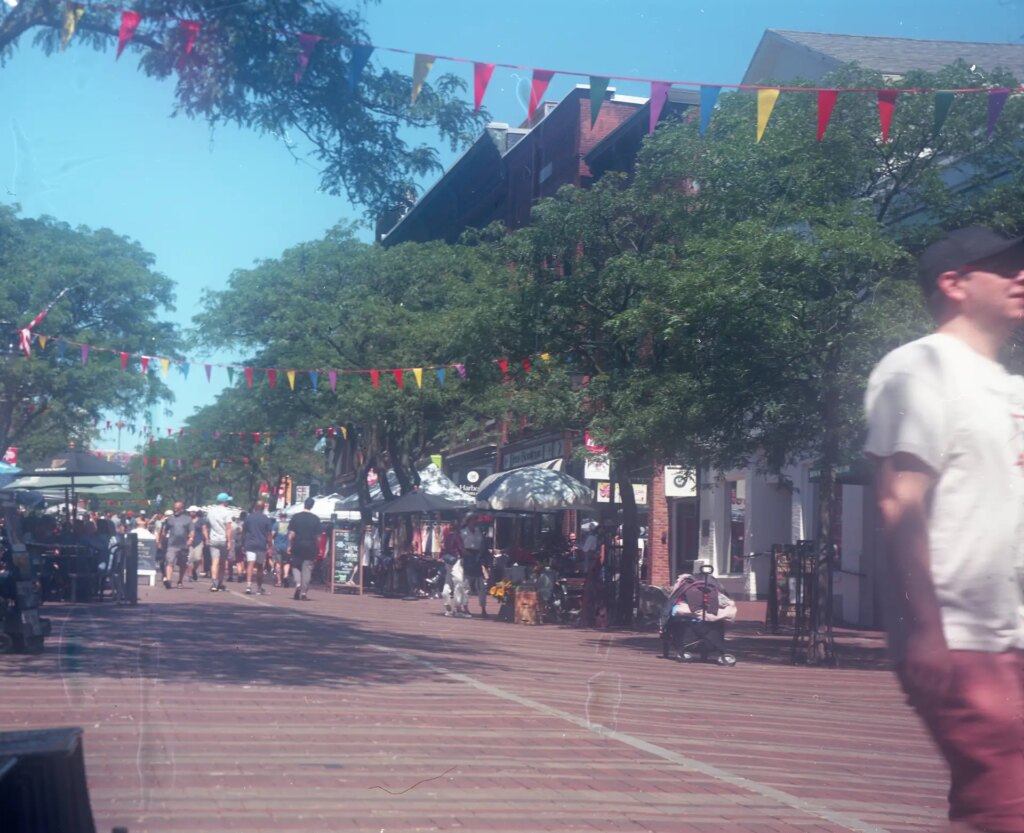
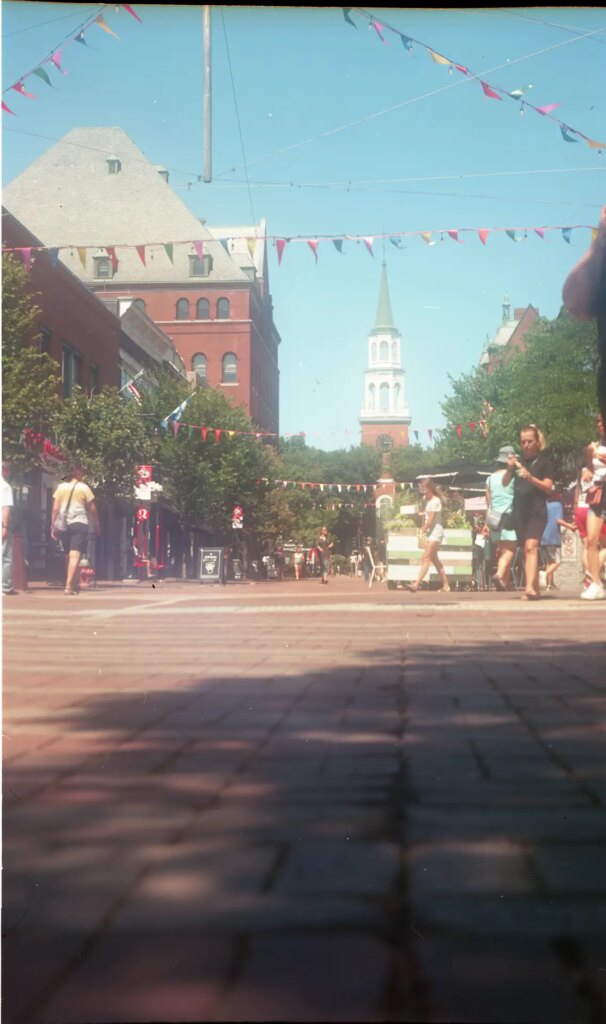
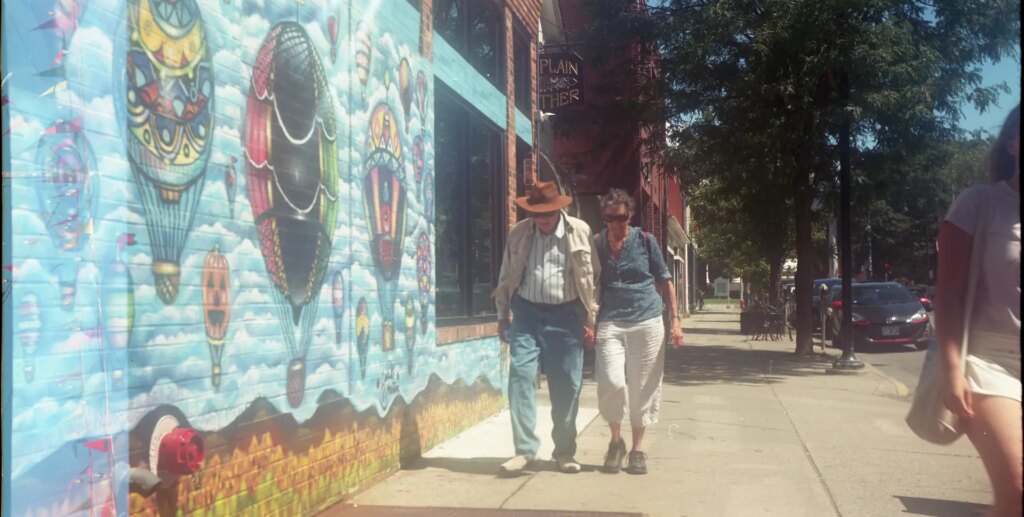
Visit my site at SpeedingShutter.Com to see more of my exciting adventures and mediocre photography!
Share this post:
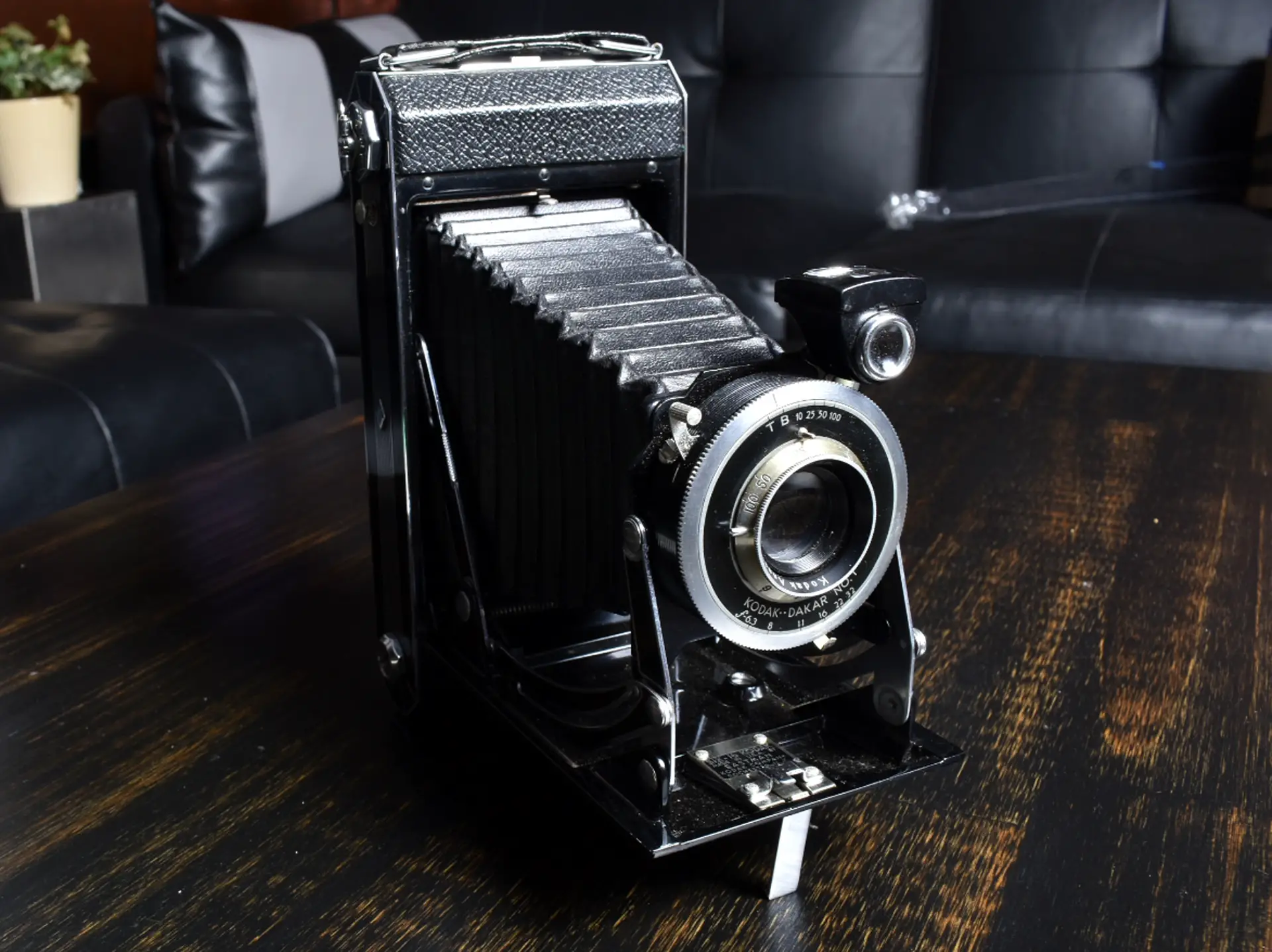








Comments
Kodachromeguy on Kodak Six-16 Camera – A Gifted Camera Experience – By Kevin Montanaro
Comment posted: 23/12/2022
Art Meripol on Kodak Six-16 Camera – A Gifted Camera Experience – By Kevin Montanaro
Comment posted: 23/12/2022
Walt on Kodak Six-16 Camera – A Gifted Camera Experience – By Kevin Montanaro
Comment posted: 23/12/2022
Kodak Six-16 Camera – A Gifted Camera Experience – Speeding Shutter on Kodak Six-16 Camera – A Gifted Camera Experience – By Kevin Montanaro
Comment posted: 24/12/2022
Bill Brown on Kodak Six-16 Camera – A Gifted Camera Experience – By Kevin Montanaro
Comment posted: 24/12/2022